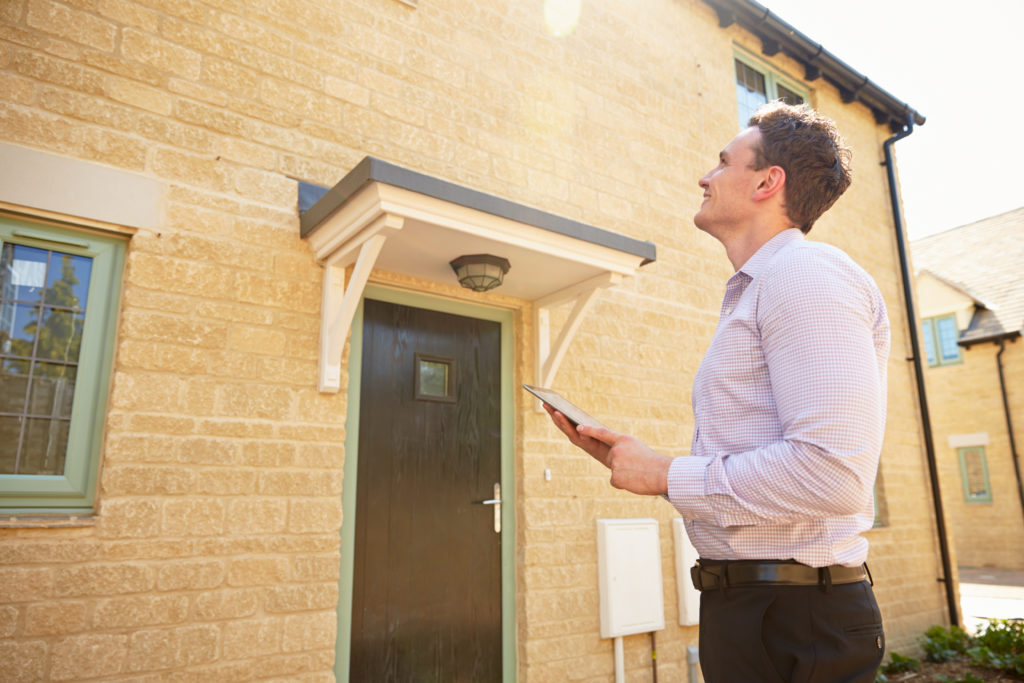What Is An EPC?

An Energy Performance Certificate, often referred to as an "EPC" for short.
This is a valid legal document which provides an energy efficiency rating.
An EPC Certificate is needed for Residential & Commercial property's, and grades their running costs from grade A-G on a sliding scale for efficiency!
The rating provided during a survey will take into account the potential energy performance of the property itself, known as the fabric, such as its existing services (lighting, heating system, insulation etc).
In addition, the EPC report will show the properties:
No two properties are used in the same way, the efficiency rating uses a ‘standard occupancy’ formula.
Which is typically based on 2 adults & 2 children
This may be much different from the way in which the occupiers actually use things like lighting and heating within the property.
*You can view any properties EPC rating in N Ireland with the EPC Checker tool here.

When Do I Need An EPC?
An EPC is legally needed in the UK whenever a property is marketed for rent or sale, or has been newly constructed.
All Energy Performance Certificates are valid for 10 years, or until a newer EPC survey replaces the existing one inside of 10 years for the same property.
It is recommended that a property’s EPC rating be made available to potential buyers/renters as soon as it is marketed.

How To Read An EPC Survey?
An EPC report will read differently depending on the property type, new build or existing.
The report on a like for like property will also be different depending on where you are based, EPCS in Northern Ireland, Wales, England can be found online via the Checker tool .
In Scotland EPC's are not listed online and get generated as PDFs.
All EPCS will include the assessors contact details and the scheme they became accredited Energy assessors with, toward the back of the issued certificate.
If you have any complaints or issues we always recommend addressing them directly with the assessor firstly directly.
The report will also include the name and address of the property, floor area, property type. Current energy rating and of course areas where you could make improvements.
The EPC will be shown on a sliding scale from A to G. The worst buildings will be graded G, and the most energy efficient will be *A rated.
The current EPC rating for the property, and a potential rating will also be displayed, which is the EPC rating that can be applied after all recommendations have been completed.
For Northern Ireland, Wales, and England the EPC rating will be displayed at the very top of the EPC.
The EPC Rating is based on factors such as the cost for fuel used for hot water, heating, ventilation and lighting.
If the property uses natural mains feed gas, it will score much higher on the EPC survey, than a property which uses has electric.
This is of course is due to costs in comparison, gas being cheaper per Per KWH.
An EPC will breakdown each buildings features & elements (Windows, Walls, Warm Water) in terms of overall performance, it will not need to consider if the actual working condition.
In Northern Ireland, Wales and England, the scale will move from most efficient,least efficient, and is calculated from the energy efficiency cost rating and the environment (CO2) rating.
If you live in Scotland everyting will be scored out of 5 stars, for its environmental impact and overall energy performance.
No rating is given for secondary heating systems and underfloor heating. New build properties will also have different descriptions types than older properties. But they will still share the sliding scale grading system of A-G.
The EPC rating and the impact to the environment will be display from A - G on a sliding scale rating.
The score given is based on assumptions about average occupancy & energy consumption. They may not fully reflective on how energy is used by the people living at the property.
The EPC will provide list of recommendations & measures for improving the property’s EPC rating.
The recommendations in the report are cumulative, which means they should be tackled in the order they appear on the energy performance certificate.
Should you choose to complete the recommendations in a non-cumulative order, the energy efficiency rating may change.
Scotland’s EPC will also show room for improvement and how any how recommendations upgrades will be beneficial to the environment rating after the work has been carried out.
The energy estimated costs for the property will show how much the average householder would spend in this type property for lighting, heating and warm water.
It will not be based on how the energy is consumed by the occupants living at the property.
The saving potential is of course based on recommended measures being fully undertaken.

What To Expect From A EPC Survey?
What to expect from a household EPC Survey?
For existing houses, bungalows & flats requiring an EPC, you will need to organise the services of an accredited "DEA".
Domestic Energy Assessor, like EPC Belfast for example. Accredited professionals who will visit your property, and undertake a full EPC assessment!
The DEA will need access full access to your property, including, all rooms and of course the loft areas, as they will need to take photos and measurements to show evidence collected for their assessment.
Homeowners will be happy to learn that the EPC assessment is not invasive, no hammering or drilling will take place.
Depending on the complexity and size of the property, a standard survey can last between 30 mins and 90 mins to complete.

What To Expect - New Builds EPC
New build energy assessment? What to epect..
For new build bungalows, flats & houses needing an EPC, you will need to hire an accredited "OCDEA" - Construction Domestic Energy Assessor.
These professionals will partake a desk-based assessment of your property, using elevation drawings and building plans.
New build assessments are required both before and after developmemnt, the calculations and EPCs get sent to Building control for signing off, once completed. Building regulations will predetermine a target that your property must pass in order to achieve a pass certificate.
A SAP (Standard Assessment Procedure) or New Build EPC, grades the efficiency of a property and delivers an indication of the estimated energy costs after construction of any residential property.
New build EPCS can be made when designing a new residential building, otherwise known as the predicted EPC!
However, it is typically completed after a new build property has been developed, as a results of an As-Built SAP Calculation.
